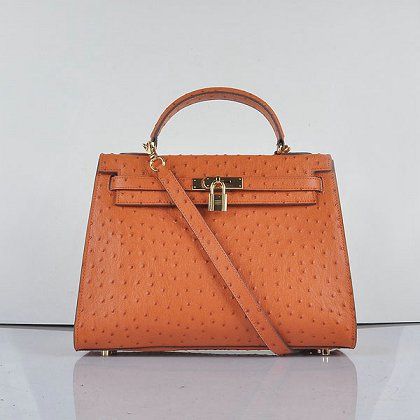by Giovanna Colombetti
Have you ever paused to consider the role your handbag plays in your life? Or, if you don’t own one, in the lives of those who do? If you are a pragmatic type of person, chances are you think of the handbag as primarily a container for toting useful items around. I certainly did—until, that is, I came across Le sac: Un petit monde d’amour (literally, “The handbag: A small world of love”) and realized just how naïve this assumption is. As one of the women quoted in the book says: “if you examine a woman’s handbag, you can almost understand her, define her, define who she is and what she has gone through in her life” (p. 129, my translation). Whether or not you agree with this statement, I am sure that reading Le sac will change how you think of and look at the handbag.

The author of this engaging book, Jean-Claude Kauffman, is a prolific French sociologist, essayist and novelist who has written more than 20 books over 30 years, many of which have been translated into several languages (see www.jckaufmann.fr). Some works that have appeared in English are Dirty linen: Couples and their laundry (1998), The single woman & the fairytale prince (2008), The meaning of cooking (2010) and Love online (2012). As these titles indicate, Kaufmann is primarily interested in relationships, women, and ordinary activities. In Le sac he discusses the handbag as an object of everyday use, and develops a variety of considerations related especially to how people manipulate this item to fabricate their identity.
The book is a joy to read, with plenty of intelligent, sensitive and playful reflections. Kaufmann composed it by drawing primarily on personal narrations from 75 members of the public, collected by posting a survey on (the French edition of) Psychologies Magazine. Other sources include blogs and email exchanges with the respondents. Le sac is divided into snappy chapters that discuss disparate but related topics, such as the various contents of the handbag, the difference between the act of filling and that of emptying the handbag, the functions and uses of larger and smaller handbags, the difference between women’s and men’s handbags, and the various roles the handbag plays at different stages of one’s life.
I am not a sociologist, so I am not in a position to assess the contribution of this book to the sociological debate on artefacts and to other themes briefly touched upon, such as secrets, gender, and consumerism. In fact, I think it would be inappropriate to subject the book to a too-analytical scrutiny, given that it is not an academic book; it is directed rather at a general well-educated public, and as such is intentionally light and playful, avoiding jargon and technical theoretical reflections. So I will leave hair-splitting analyses and criticisms aside, and rather explain why, in spite of this lightness, as an academic I found the book not only very pleasant to read and entertaining, but also stimulating and inspiring for my own research.
The author of this engaging book, Jean-Claude Kauffman, is a prolific French sociologist, essayist and novelist who has written more than 20 books over 30 years, many of which have been translated into several languages (see www.jckaufmann.fr). Some works that have appeared in English are Dirty linen: Couples and their laundry (1998), The single woman & the fairytale prince (2008), The meaning of cooking (2010) and Love online (2012). As these titles indicate, Kaufmann is primarily interested in relationships, women, and ordinary activities. In Le sac he discusses the handbag as an object of everyday use, and develops a variety of considerations related especially to how people manipulate this item to fabricate their identity.

The book is a joy to read, with plenty of intelligent, sensitive and playful reflections. Kaufmann composed it by drawing primarily on personal narrations from 75 members of the public, collected by posting a survey on (the French edition of) Psychologies Magazine. Other sources include blogs and email exchanges with the respondents. Le sac is divided into snappy chapters that discuss disparate but related topics, such as the various contents of the handbag, the difference between the act of filling and that of emptying the handbag, the functions and uses of larger and smaller handbags, the difference between women’s and men’s handbags, and the various roles the handbag plays at different stages of one’s life. I am not a sociologist, so I am not in a position to assess the contribution of this book to the sociological debate on artefacts and to other themes briefly touched upon, such as secrets, gender, and consumerism. In fact, I think it would be inappropriate to subject the book to a too-analytical scrutiny, given that it is not an academic book; it is directed rather at a general well-educated public, and as such is intentionally light and playful, avoiding jargon and technical theoretical reflections. So I will leave hair-splitting analyses and criticisms aside, and rather explain why, in spite of this lightness, as an academic I found the book not only very pleasant to read and entertaining, but also stimulating and inspiring for my own research.
I am a philosopher of emotion and cognition, and I stumbled upon this book while looking for works discussing how we relate affectively to our material surroundings. More specifically, I wanted to find evidence of how people manipulate and relate to objects in order to support and structure their affective life. Kaufmann’s book proved to be very informative. As he puts it, “there are all the emotions of the world in a handbag” (p. 8, my translation) and his account indeed reveals many different ways in which the handbag plays an affectively salient role in our lives. As Kaufmann does not provide a systematic account of this aspect of his work, let me do so for him.
I spotted at least seven different affective roles/meanings of the handbag, going from its interior to its exterior:
(1) The contents of the handbag appear to have a variety of affective functions. A central one is to rekindle personally significant memories, and to this aim people carry all sorts of things: pictures of loved ones, journals, old cinema tickets, lovers’ poems, and more. Sometimes the handbag itself, when inherited from a loved one for example, is a cherished memento.
(2) Other contents influence one’s sense of what one can do, for example by making one feel safer, as in the case of personal alarms or small weapons.
(3) Then comes the affective quality of the action of putting things inside the handbag, and of taking them out, which Kaufmann insightfully and quite comically describes as diametrically opposed: whereas the former comes with a sense of ease and comfort, and has a markedly pleasant character, the latter can be frustrating and exasperating as one ends up finding anything but what one is looking for.
(4) The act of organizing the handbag for the day is itself often accompanied by affective feelings too, as some people enjoy planning and imaginatively structuring their actions and the parts they will play in various situations.
(5) Moving outward, to the handbag’s looks and feels, we find that many people cherish the physical contact with their handbag, the sense of reassurance that comes from touching, carrying and even smelling it, or the uplifting character of its colours and the sheer aesthetic pleasure of looking at it. As Kaufmann discusses in one dedicated chapter, several people recall buying a handbag after falling in “love at first sight” with its appearance.
(6) Then there is the affective feeling of how the handbag looks on oneself, how it fits with one’s cloths and body shape, and how it helps define or redefine one’s image and style.
(7) And finally, the affective value of the handbag is also revealed in how other people regard it—as something profoundly personal, intimate, so much a part of one’s self that its contents can be explored only with the owner’s permission and, even then, with respect and consideration.
Who are the people whose narrations contributed to making this book so insightful? Unfortunately, we are not told where they are from—socially, culturally, geographically—and what they do in their lives. Many of them come across as strikingly perceptive and self-reflective, clearly cherishing the opportunity to reflect on their relation to their handbag (or, more often, handbags) and to further their self-understanding. Although Kaufmann does not provide statistics, it is apparent that the vast majority of his respondents were women. And indeed, as he notes, the handbag appears to be primarily, still, a woman’s object. His suggestion is that this is because of the lingering role of women as primary carers and providers-for-others—a plausible explanation I thought, further supported by the finding that the handbag tends to grow bigger or smaller in a woman’s different life stages: heavy and full of things when she is growing a family, less voluminous and lighter later in life, when she discovers a new freedom less encumbered by responsibilities.
Reading this playful book was a journey of self-discovery for me as well. Before reading it I was, I confess, entirely oblivious to the handbag. As I cycle most of the time, I mainly use a pannier, and generally try to carry as little as possible on me, preferring to keep my hands and shoulders free. My attitude, I now know, resembles in this respect that of (most) men, indicating perhaps a certain reluctance to take on the role of “carrier” of others’ needs. In fact, I do not even own a handbag—or rather, I should say, I did not even own a handbag when I first read this book… because I have in the meantime gotten myself one! Aware of its importance, I have chosen it carefully, making sure I like how it looks and feels. Predictably, however, I have thereby also joined the rows of those who spend hours rummaging in it to find things that inevitably slip in its deeper layers. More importantly, I do not look at the world in the same way anymore: I find myself observing people’s handbags on trains, social gatherings and conferences, and wondering what role this object plays in their lives. So, in my case at least, Le sac has successfully achieved one of his main aims: by foregrounding the ordinary, it has changed my way of looking at the world, making me more aware of the many meanings of our everyday things and actions. I think Kaufmann would be pleased.
Jean-Claude Kaufmann: Le sac. Un petit monde d’amour
Paris: JC Lattès
ISBN: 9782709635462
Paperback, 252 pages, EUR 17.80
Giovanna Colombetti is Associate Professor of Philosophy in the Department of Sociology, Philosophy, and Anthropology at the University of Exeter, UK, and the author of The Feeling Body: Affective Science Meets the Enactive Mind (Cambridge, Mass.: The MIT Press 2014).
(c) 2015 The Berlin Review of Books
